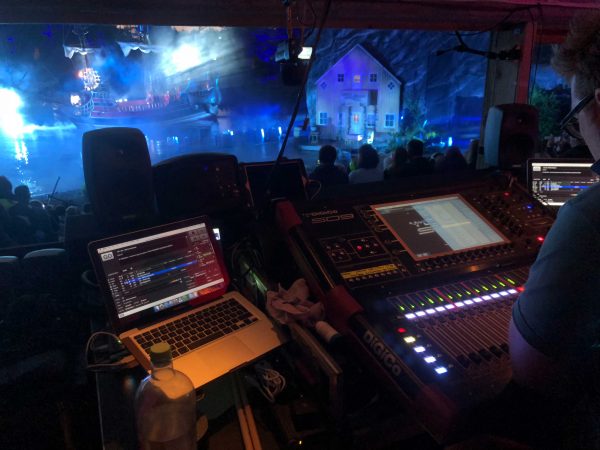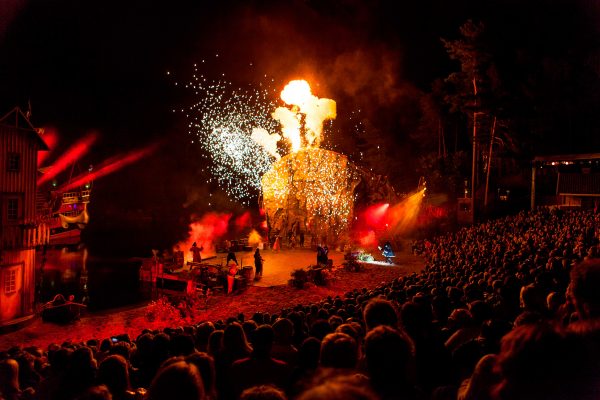DiGiCo Makes Complex Distribution Simple For Kaptein Sabeltann
Covering an area of 150 acres of wild Nordic terrain, Kristiansand Dyrepark and amusement park is Norway's favourite visitor attraction and its favourite show is Kaptein Sabeltann (Captain Sabertooth) – in fact, say the word Dyrepark in Norway and the majority of the country’s population thinks of a pirate.
Covering an area of 150 acres of wild Nordic terrain, Kristiansand Dyrepark and amusement park is Norway’s favourite visitor attraction and its favourite show is Kaptein Sabeltann (Captain Sabertooth) – in fact, say the word Dyrepark in Norway and the majority of the country’s population thinks of a pirate. This year, the zoo decided to up the specification for audio on the show and has invested in a DiGiCo SD9 and S21, which have helped to address its complex signal distribution, an issue that its engineers say was easily solved with the DiGiCo system.
Kaptein Sabeltannis one of Norway’s most popular children’s characters and has been captivating audiences through stage, film, television, cartoons and books. The show has been performed at Kristianzand Zoo since it was first written in the early 1990s and, in 1994, won a Formoe a Spellemann prize, the Norwegian equivalent of the Grammy Awards, forCaptain Sabertooth and the Treasure in Luna Bay.
The audio system for the show was designed, programmed, and is run by Lars Hareide Swenson and Kristian Bronebakk, with Lars operating the SD9 at FOH, and Kristian deploying the S21 at the monitor position. Design was in consultation with John Idar Bakke from DiGiCo’s Norwegian distributor, Scandec Systemer, which also supplied the consoles, which are owned by Lars and Kristian.
Whilst the SD9 is used as the control system for the main PA and surround system, the S21 is used as a convertor from Dante to MADI, and back to Dante, as well as handling the monitor system, which comprises 24 channels of wireless microphones and six channels of IEMs.
“The whole idea for the system was to keep the audio signal in the digital domain, using a SD9/SD11i desk and to be able to listen to the radiomics in the radio room,” explains Lars. “However, we had to solve the Dante-MADI situation and we wanted to do that without using an external box. For simplicity, we could have used two S21s, but I wanted to have the recall scope of the SD Range consoles available.
“So our solution was to have an S21 with MADI- and Dante-expansion cards together with the SD9. All Dante inputs are routed to the S21 inputs and, by using direct out routed to the SD9 via MADI, we are able to share input sources to both desks.
“The ability to go from the beltpack / mic and then all the way through the system to the PA amps in the digital domain with Dante and MADI makes a lot of sense. It provides a noise-free and more flexible system than we had before,” says Kristian. “Also, the ability to monitor and listen to all inputs with the S21 means that we can check and control the mics before, and when, they are on stage really efficiently. The compact S21 console serves as an I/O matrix, monitoring interface and format converter – all in one.”
“All mixes from SD9 are routed via MADI back to S21 inputs, and by using direct-out routed to DME64 via Dante, we were able to distribute all our mixes to all speaker systems,” Lars concludes. “It’s as simple as that!”
All mixes from SD9 are routed via MADI back to S21 inputs, and by using direct-out routed to DME64 via Dante, we were able to distribute all our mixes to all speaker systems,” Lars concludes. “It’s as simple as that!





